Takehiro Moriya
Acousto-optic reconstruction of exterior sound field based on concentric circle sampling with circular harmonic expansion
Nov 03, 2023



Abstract:Acousto-optic sensing provides an alternative approach to traditional microphone arrays by shedding light on the interaction of light with an acoustic field. Sound field reconstruction is a fascinating and advanced technique used in acousto-optics sensing. Current challenges in sound-field reconstruction methods pertain to scenarios in which the sound source is located within the reconstruction area, known as the exterior problem. Existing reconstruction algorithms, primarily designed for interior scenarios, often exhibit suboptimal performance when applied to exterior cases. This paper introduces a novel technique for exterior sound-field reconstruction. The proposed method leverages concentric circle sampling and a two-dimensional exterior sound-field reconstruction approach based on circular harmonic extensions. To evaluate the efficacy of this approach, both numerical simulations and practical experiments are conducted. The results highlight the superior accuracy of the proposed method when compared to conventional reconstruction methods, all while utilizing a minimal amount of measured projection data.
Modified Parametric Multichannel Wiener Filter \\for Low-latency Enhancement of Speech Mixtures with Unknown Number of Speakers
Jun 29, 2023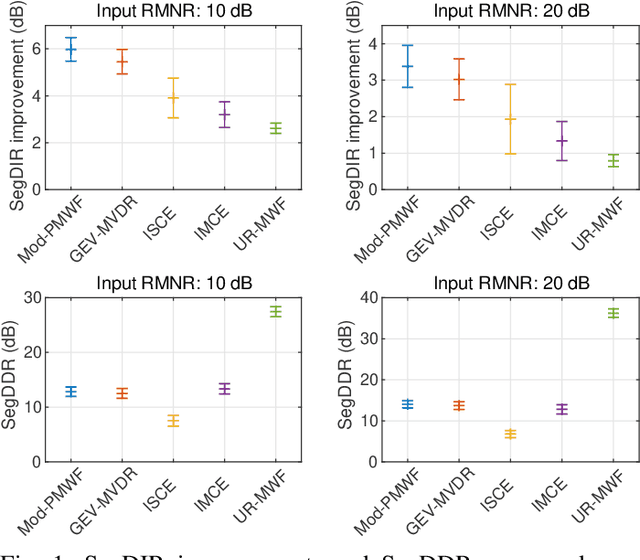
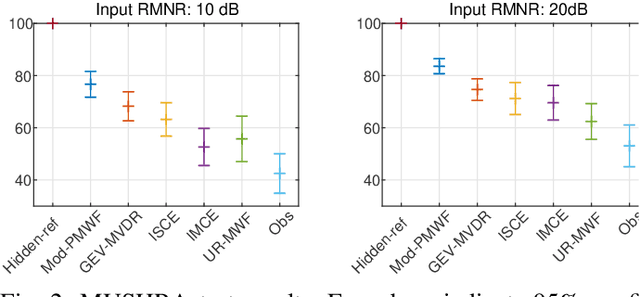
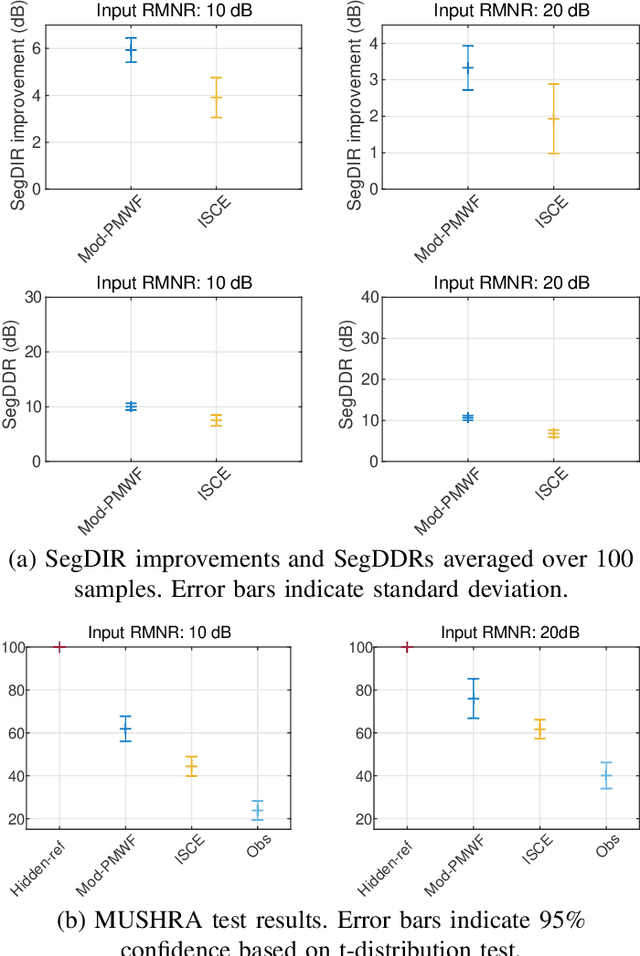

Abstract:This paper introduces a novel low-latency online beamforming (BF) algorithm, named Modified Parametric Multichannel Wiener Filter (Mod-PMWF), for enhancing speech mixtures with unknown and varying number of speakers. Although conventional BFs such as linearly constrained minimum variance BF (LCMV BF) can enhance a speech mixture, they typically require such attributes of the speech mixture as the number of speakers and the acoustic transfer functions (ATFs) from the speakers to the microphones. When the mixture attributes are unavailable, estimating them by low-latency processing is challenging, hindering the application of the BFs to the problem. In this paper, we overcome this problem by modifying a conventional Parametric Multichannel Wiener Filter (PMWF). The proposed Mod-PMWF can adaptively form a directivity pattern that enhances all the speakers in the mixture without explicitly estimating these attributes. Our experiments will show the proposed BF's effectiveness in interference reduction ratios and subjective listening tests.
Deep sound-field denoiser: optically-measured sound-field denoising using deep neural network
Apr 27, 2023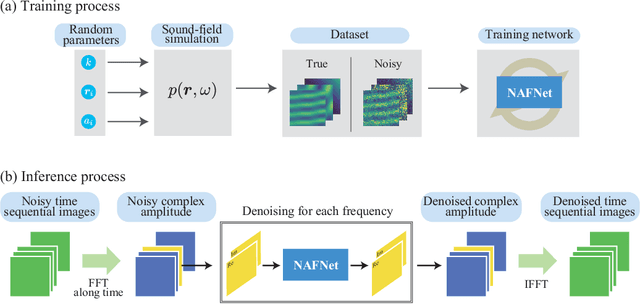

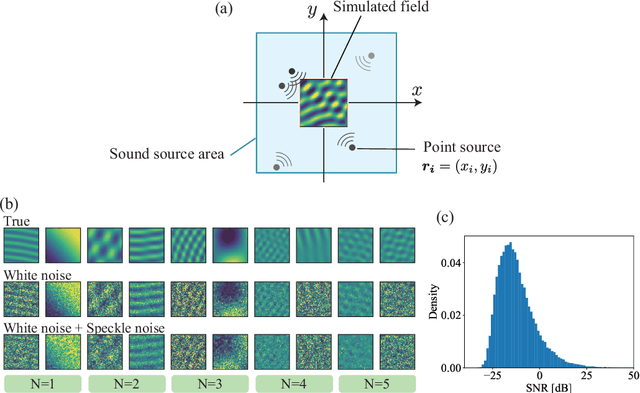

Abstract:This paper proposes a deep sound-field denoiser, a deep neural network (DNN) based denoising of optically measured sound-field images. Sound-field imaging using optical methods has gained considerable attention due to its ability to achieve high-spatial-resolution imaging of acoustic phenomena that conventional acoustic sensors cannot accomplish. However, the optically measured sound-field images are often heavily contaminated by noise because of the low sensitivity of optical interferometric measurements to airborne sound. Here, we propose a DNN-based sound-field denoising method. Time-varying sound-field image sequences are decomposed into harmonic complex-amplitude images by using a time-directional Fourier transform. The complex images are converted into two-channel images consisting of real and imaginary parts and denoised by a nonlinear-activation-free network. The network is trained on a sound-field dataset obtained from numerical acoustic simulations with randomized parameters. We compared the method with conventional ones, such as image filters and a spatiotemporal filter, on numerical and experimental data. The experimental data were measured by parallel phase-shifting interferometry and holographic speckle interferometry. The proposed deep sound-field denoiser significantly outperformed the conventional methods on both the numerical and experimental data.
A Probabilistic Shaping Approach for Optical Region-of-Interest Signaling
Sep 02, 2022
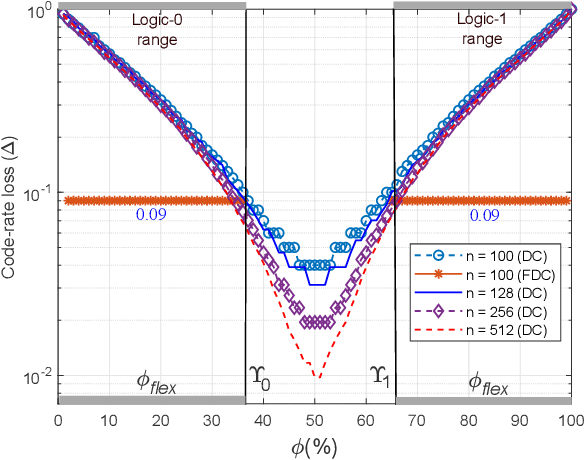
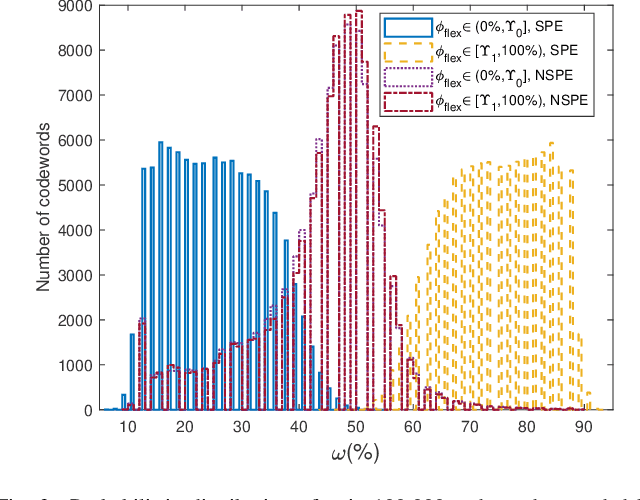
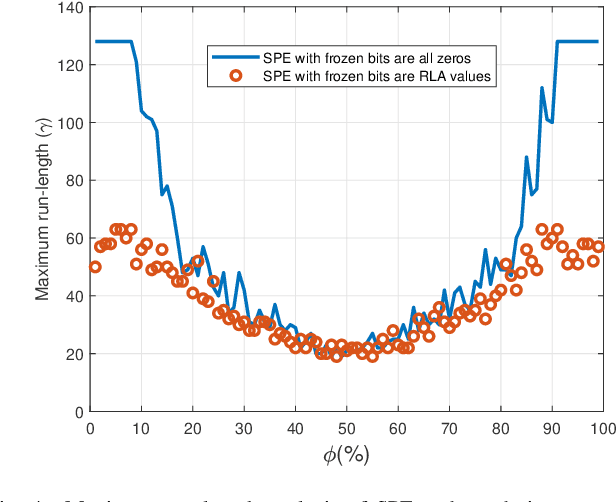
Abstract:We propose a probabilistic shaping approach for region-of-interest signaling, where a low-rate signal controls the desired probabilistic ranges of a high-rate data stream using a flexible distribution controller. In addition, we introduce run-length-aware values for frozen bit indices in systematic polar code to minimize the run-length without using run-length-limited code. Our compact system can support soft-decision forward-error-correction decoding with excellent spectral efficiency compared with related work based on hybrid modulation schemes.
* Cite to this paper as: Nguyen, Duc-Phuc, Yoshifumi Shiraki, Jun Muramatsu, and Takehiro Moriya. "A Probabilistic Shaping Approach for Optical Region-of-Interest Signaling." IEEE Photonics Technology Letters 34, no. 6 (2022): 309-312
 Add to Chrome
Add to Chrome Add to Firefox
Add to Firefox Add to Edge
Add to Edge